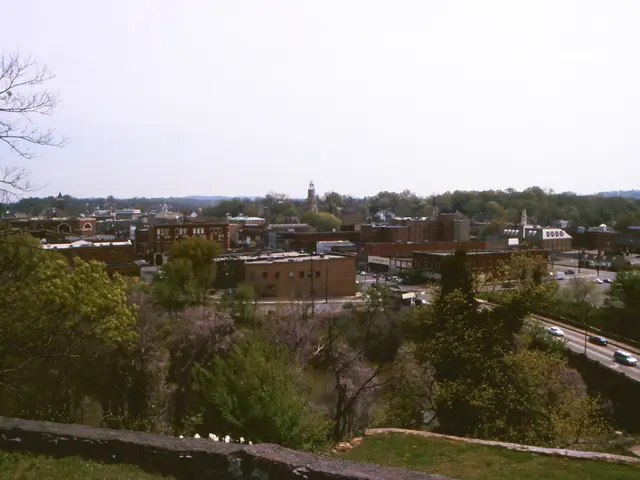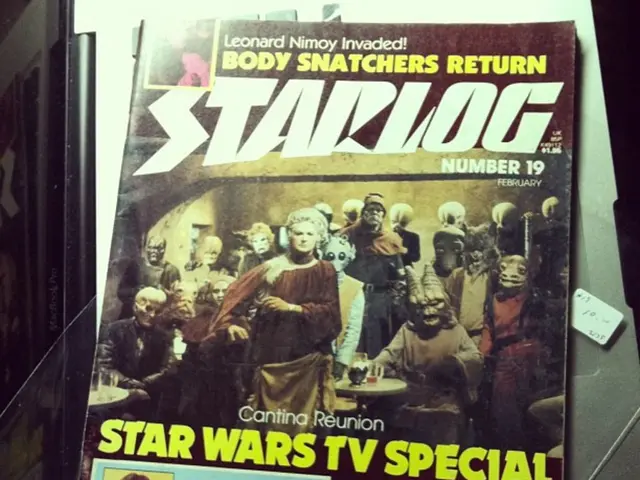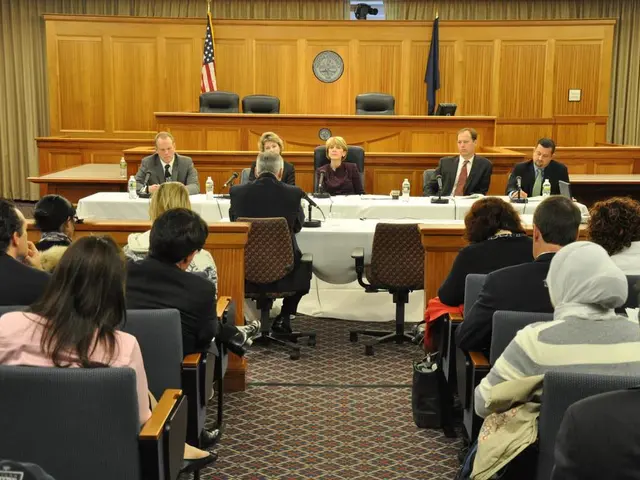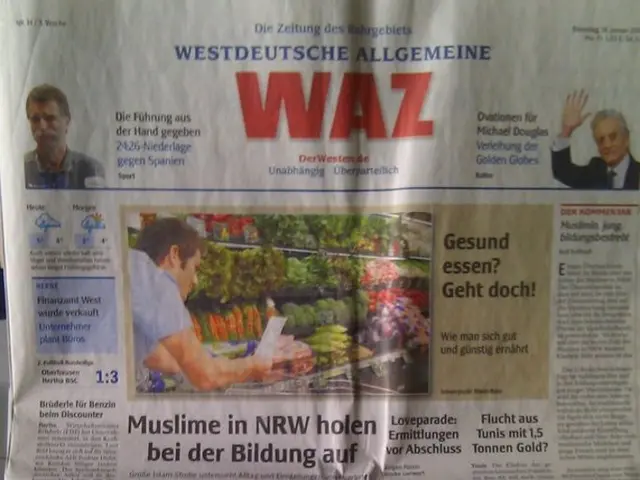Prospecting in Remote Wilderness
Eastern Australia is a treasure trove for gemstone enthusiasts, particularly those with a keen interest in sapphires and opals. One such gemmologist recently embarked on a three-week adventure, traversing the sapphire and opal fields of this vibrant region.
The journey began in Sydney, with the traveler venturing through the picturesque landscapes of New South Wales and Queensland in a motorhome. The first stop was The Gemfields, a region in central Queensland that has been mining green and yellow sapphires, as well as zircons, since the 1880s.
Sapphires from The Gemfields are renowned for their quality, often forming in alluvial deposits, making them easier to mine than primary deposits. The region's unique geological history contributes to the formation of these high-quality stones. Visitors can explore Australia's largest underground sapphire mine, or engage in fossicking for sapphires in designated parks.
In Rubyvale, miners dig one-metre diameter vertical shafts through 'shin cracker' overburden, following alluvial pay zones horizontally. Here, sapphires, zircons, garnets, and occasionally diamonds concentrate within narrow 'wash zones'. The alluvial sapphires in Rubyvale mines are found at a depth of 15 meters or more and sit uncomfortably over eroded granite.
Another intriguing location for opal mining is Yowah, located in southwestern Queensland. This area is not as well-known as Coober Pedy but offers unique opal finds, particularly the Yowah Nut, a type of opal that forms in a rounded, kernel-like shape.
In Yowah, opal is found inside nodules, with nine out of ten nodules being empty, making it exciting to find opal inside. Scott Shorten, a local shopkeeper, opal mine tour guide, and librarian, sold good samples of opal.
The travelers also found sapphires and zircons while fossicking in Glenn Innes, a gem field two days from Sydney. In Coober Pedy, while not strictly in eastern Australia, they witnessed the opal deposits that earned it the title of the "Opal Capital of the World."
The journey was not without its challenges. Cyclone Debbie disrupted their plans to visit a gem dealer in Yeppoon and explore the Marlborough Chrysoprase. However, they managed to visit the Quilpie opal fields ahead of Cyclone Debbie's rainclouds.
In Quilpie, Eddy Lunney, the owner of the only shop open, gave a tour, a masterclass in boulder opal cutting and polishing, and sold good samples of opal. Greg Armstrong, an opal miner, cutter, and stone setter, gave the travelers a bag of 'potch' opal to practice cutting at home.
St. Finbarr's Catholic Church in Quilpie stands out with impressive boulder opal panels on its altar, font, and lectern, donated by local miner Des Burton in 1976. The field trip concluded in Lightning Ridge, famous for its black opals, although no black opals were purchased due to the shops being closed.
This three-week adventure provided a unique insight into Australia's sapphire and opal fields, offering a glimpse into the exciting world of gemstone mining and the unique characteristics and findings of each location.
- In Sydney, the traveler began an adventure exploring Eastern Australia's sapphire and opal fields, journeying through the picturesque landscapes of New South Wales and Queensland.
- The first stop was The Gemfields, a region known for mining quality green and yellow sapphires, zircons, and alluvial deposits since the 1880s.
- Sapphires from The Gemfields are esteemed for their quality, making them easier to mine due to their alluvial formation.
- The region's unique geological history contributes to the formation of these high-quality stones.
- Visitors can explore Australia's largest underground sapphire mine or engage in fossicking for sapphires in designated parks.
- In Rubyvale, miners dig one-metre diameter shafts to follow alluvial pay zones, finding sapphires, zircons, garnets, and occasionally diamonds.
- Sapphires, zircons, garnets, and occasionally diamonds concentrate within narrow 'wash zones' in Rubyvale mines at a depth of 15 meters or more.
- Another intriguing location for opal mining is Yowah, known for the unique Yowah Nut opal finds.
- In Yowah, opal is found inside nodules, with nine out of ten nodules being empty, making it thrilling to discover opal.
- Scott Shorten, a local shopkeeper, opal mine tour guide, and librarian, sold good samples of opal in Yowah.
- The travelers also found sapphires and zircons while fossicking in Glenn Innes, a gem field two days from Sydney.
- In Coober Pedy, despite not being strictly in eastern Australia, they witnessed the opal deposits that earned it the title of the "Opal Capital of the World."
- Cyclone Debbie disrupted their plans to visit a gem dealer in Yeppoon and explore the Marlborough Chrysoprase.
- They managed to visit the Quilpie opal fields ahead of Cyclone Debbie's rainclouds.
- Eddy Lunney, the owner of the only shop open in Quilpie, gave a tour, a masterclass in boulder opal cutting and polishing, and sold good samples of opal.
- Greg Armstrong, an opal miner, cutter, and stone setter, gave the travelers a bag of 'potch' opal to practice cutting at home.
- St. Finbarr's Catholic Church in Quilpie stands out with impressive boulder opal panels on its altar, font, and lectern, donated by local miner Des Burton in 1976.
- The field trip concluded in Lightning Ridge, famous for its black opals, although no black opals were purchased due to the shops being closed.
- This three-week adventure offered a unique insight into Australia's sapphire and opal fields, revealing the exciting world of gemstone mining and the unique characteristics of each location.
- The traveler's lifestyle during this adventure was a combination of outdoor-living, home-and-garden (fossicking for sapphires), and travel.
- After the trip, the traveler reflected on their experience, considering the potential for sustainable-living and the integration of gemmology workshops and courses into their future lifestyle.




